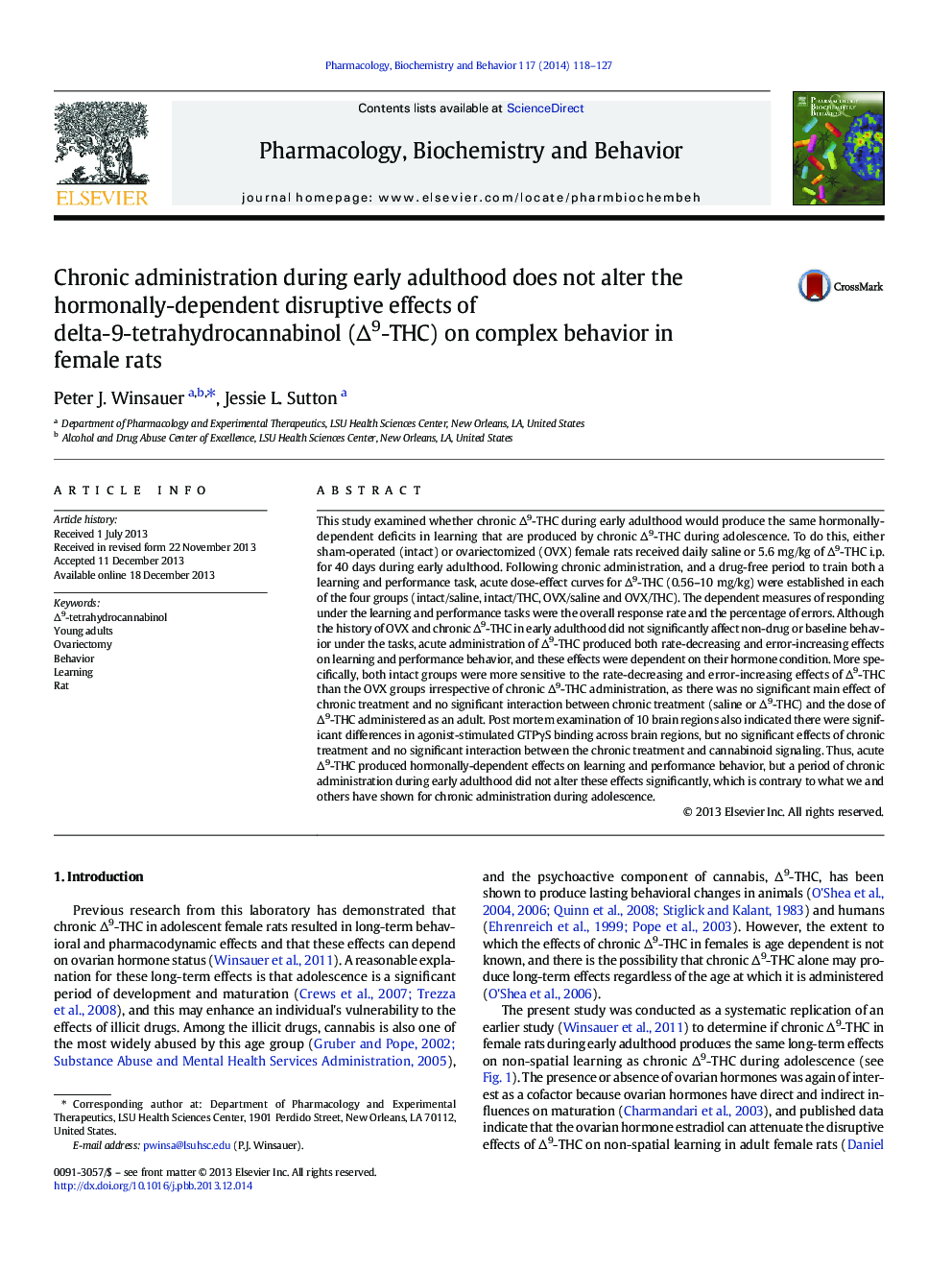| Article ID | Journal | Published Year | Pages | File Type |
|---|---|---|---|---|
| 8351484 | Pharmacology Biochemistry and Behavior | 2014 | 10 Pages |
Abstract
This study examined whether chronic Î9-THC during early adulthood would produce the same hormonally-dependent deficits in learning that are produced by chronic Î9-THC during adolescence. To do this, either sham-operated (intact) or ovariectomized (OVX) female rats received daily saline or 5.6 mg/kg of Î9-THC i.p. for 40 days during early adulthood. Following chronic administration, and a drug-free period to train both a learning and performance task, acute dose-effect curves for Î9-THC (0.56-10 mg/kg) were established in each of the four groups (intact/saline, intact/THC, OVX/saline and OVX/THC). The dependent measures of responding under the learning and performance tasks were the overall response rate and the percentage of errors. Although the history of OVX and chronic Î9-THC in early adulthood did not significantly affect non-drug or baseline behavior under the tasks, acute administration of Î9-THC produced both rate-decreasing and error-increasing effects on learning and performance behavior, and these effects were dependent on their hormone condition. More specifically, both intact groups were more sensitive to the rate-decreasing and error-increasing effects of Î9-THC than the OVX groups irrespective of chronic Î9-THC administration, as there was no significant main effect of chronic treatment and no significant interaction between chronic treatment (saline or Î9-THC) and the dose of Î9-THC administered as an adult. Post mortem examination of 10 brain regions also indicated there were significant differences in agonist-stimulated GTPγS binding across brain regions, but no significant effects of chronic treatment and no significant interaction between the chronic treatment and cannabinoid signaling. Thus, acute Î9-THC produced hormonally-dependent effects on learning and performance behavior, but a period of chronic administration during early adulthood did not alter these effects significantly, which is contrary to what we and others have shown for chronic administration during adolescence.
Related Topics
Life Sciences
Biochemistry, Genetics and Molecular Biology
Biochemistry
Authors
Peter J. Winsauer, Jessie L. Sutton,
